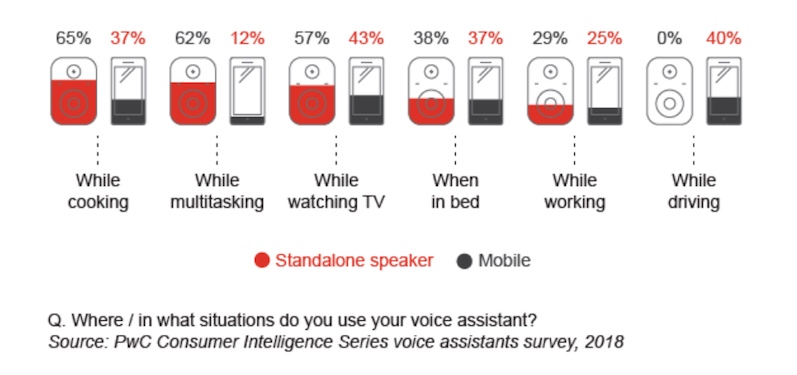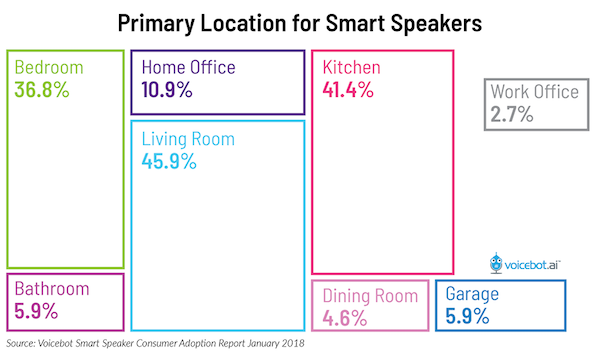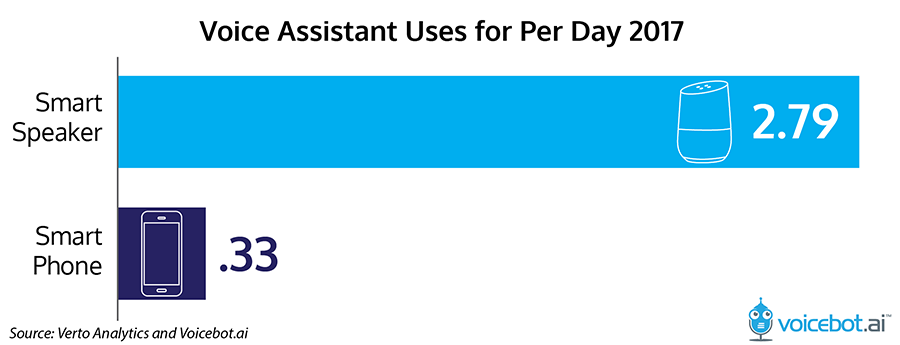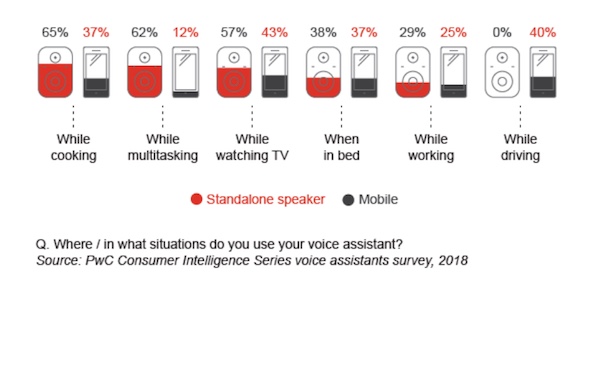Cooking, Multitasking and Television Top the List of Voice Assistant Activity Pairings
There is some solid survey data on the most common voice assistant use cases employed by consumers. These use cases identify the tasks people perform using their voice such as playing music, asking questions and setting timers. PwC has added to the understanding of voice assistant use in a recent survey by identifying what activity consumers are most commonly engaged in when summoning their voice assistants. And, the findings differentiated between voice assistant usage through smart speakers and smartphones. Sixty-five percent of consumers said they use smart speaker based voice assistants while cooking, 62% while multitasking and 57% while watching TV.

The smart speaker use cases match the most common areas where consumers place their devices, the kitchen and living room. Voicebot’s Smart Speaker Consumer Adoption Report 2018 developed in collaboration with Pullstring and RAIN Agency found that 45.9% of smart speaker owners had a device in the living room and 41.4% in the kitchen. This aligns well with cooking, TV watching and multitasking locations in the home. By contrast, only 10.9% place a smart speaker in a home office and a mere 2.7% in a work office so the PwC finding that 29% said they use them while working is surprising. Granted, WiFi ubiquity does mean more work is done in the kitchen, bedroom and family living spaces than in the past. The data also suggest that we are likely to see the number of work spaces with smart speakers increase.

Voice Assistants Used More Broadly on Smart Speakers Than Smartphones
The other big finding is that voice assistants on smart speakers have broader usage than on smartphone despite their more limited accessibility. There was a school of thought that we didn’t need smart speakers because voice assistants were already available on smartphones and we have those accessible all of the time. It turns out that this premise was false and that the hands free, far-field voice recognition is the killer app of smart speakers. PwC data show only one use case where voice assistants are used more frequently through smartphones and that is while driving.
Given that smart speaker options are very limited in cars it is not surprising that voice assistant usage is 0% while driving compared to 40% for smartphones. However, that may be changing. Smartphones are getting some voice assistant competition from smart speakers such as ROAV Viva and Amazon is testing Echo Dots in cars. In addition, voice assistants such as Amazon Alexa and Google Assistant integrated into car dashboards are becoming more common in models ranging from Ford and Toyota to BMW. The presence in dash will almost certainly displace at least some voice assistant use through smartphones in the car.
We also see that the frequency of voice assistant use it greater through smart speakers. Voicebot data show an average of 2.79 consumer uses per day for smart speaker owners versus just 0.33 per day for smartphone owners. This is not to say that voice assistant usage on mobile devices won’t increase over time and show similar vitality as smart speaker use. However, PwC’s data reinforces that smart speakers and other ambient voice assistant access points are popular and currently represent the driving force behind voice assistant adoption.

Virtual Digital Assistant Software to Reach $7.7 Billion and 1 Billion Users in 2025









